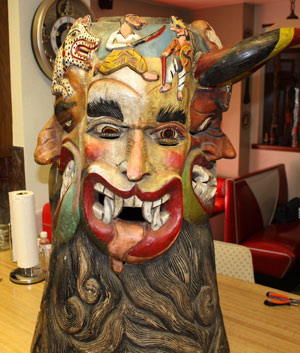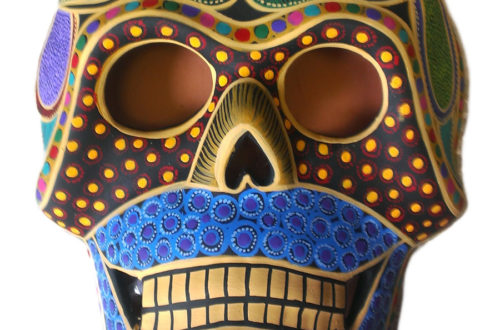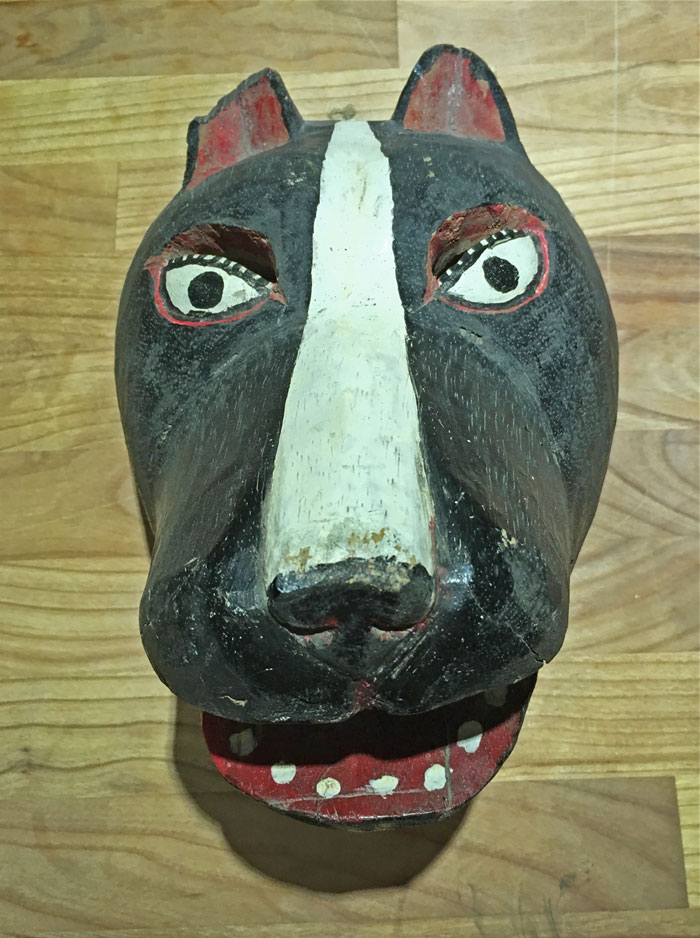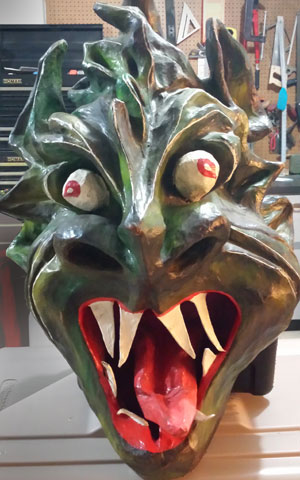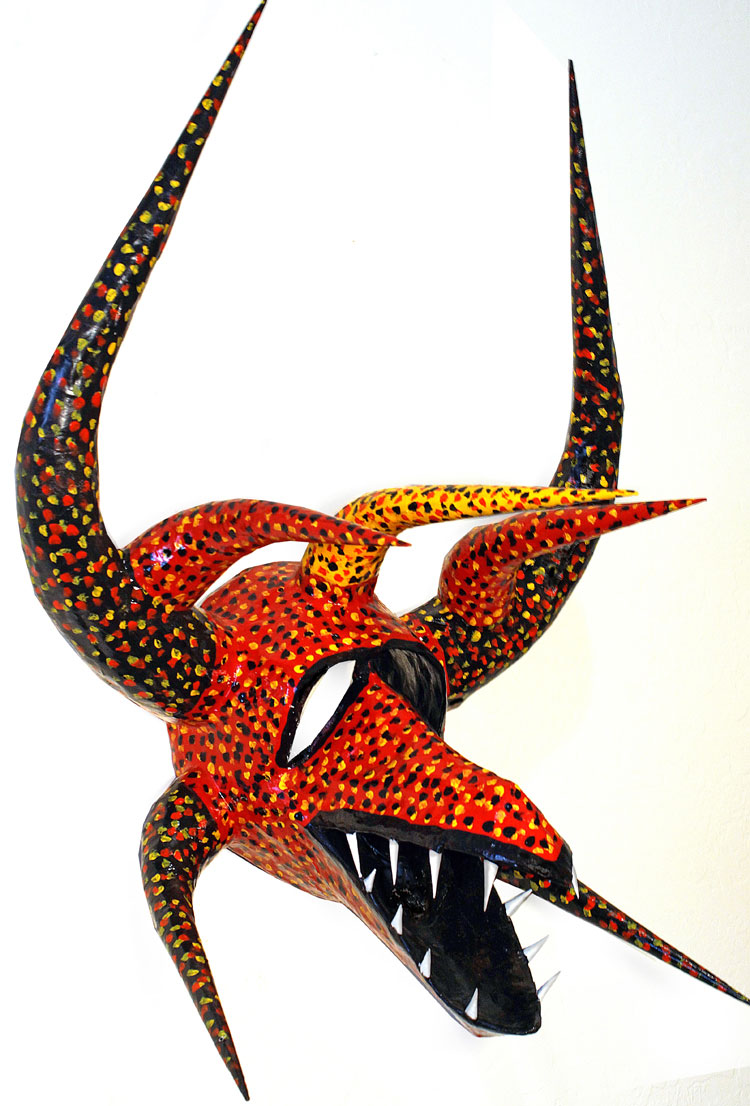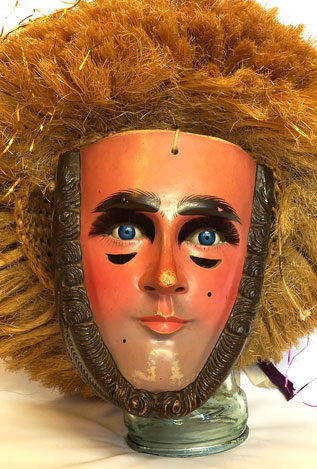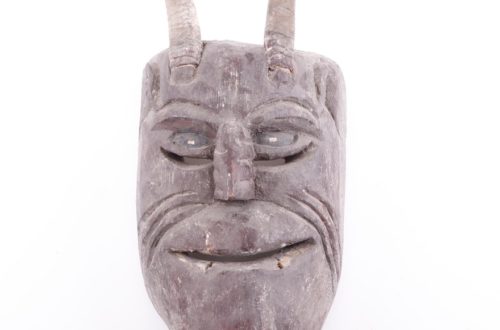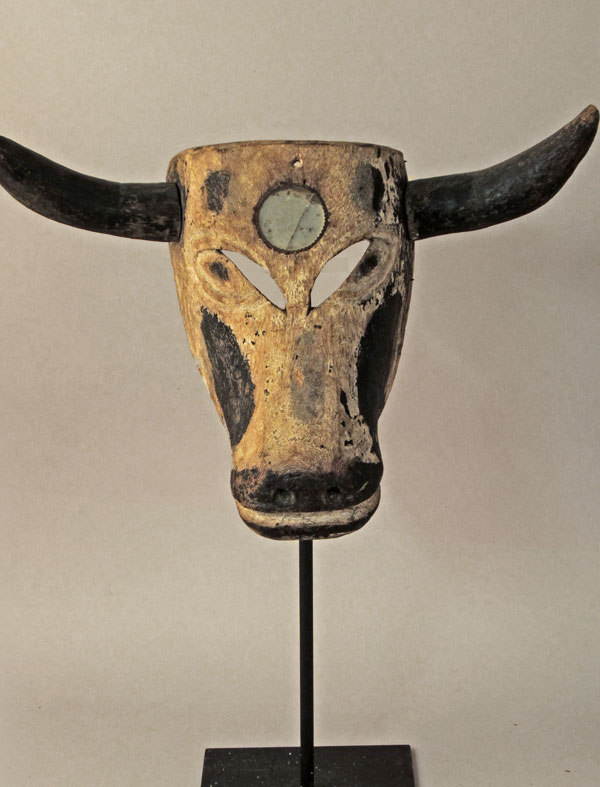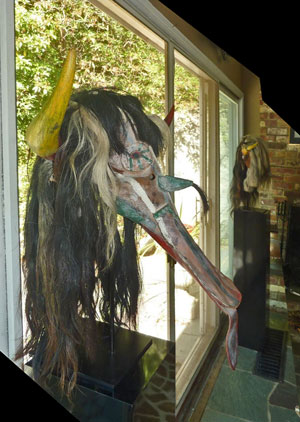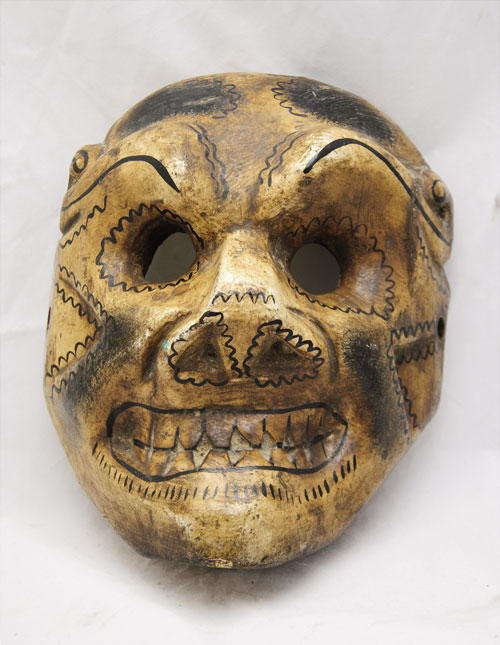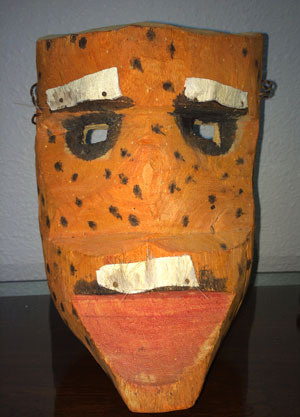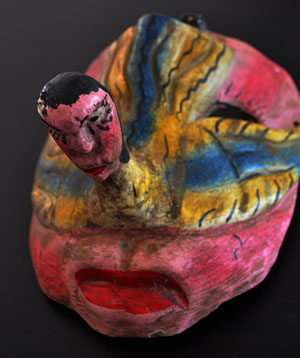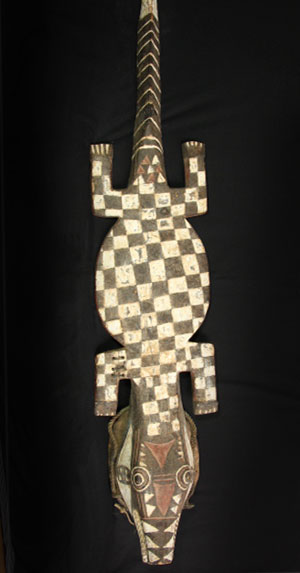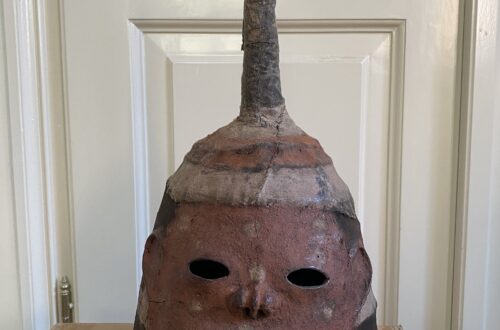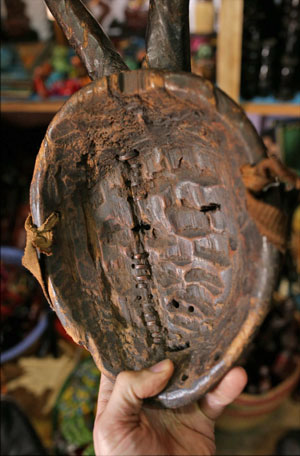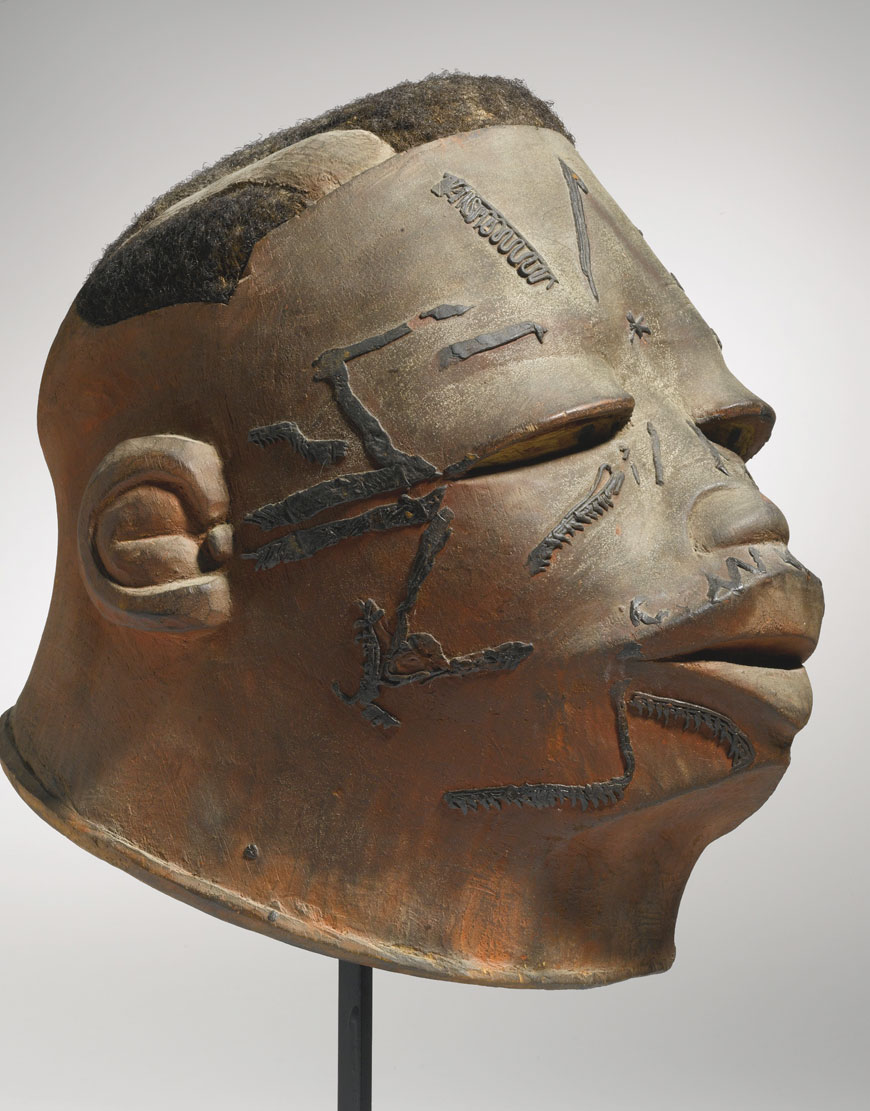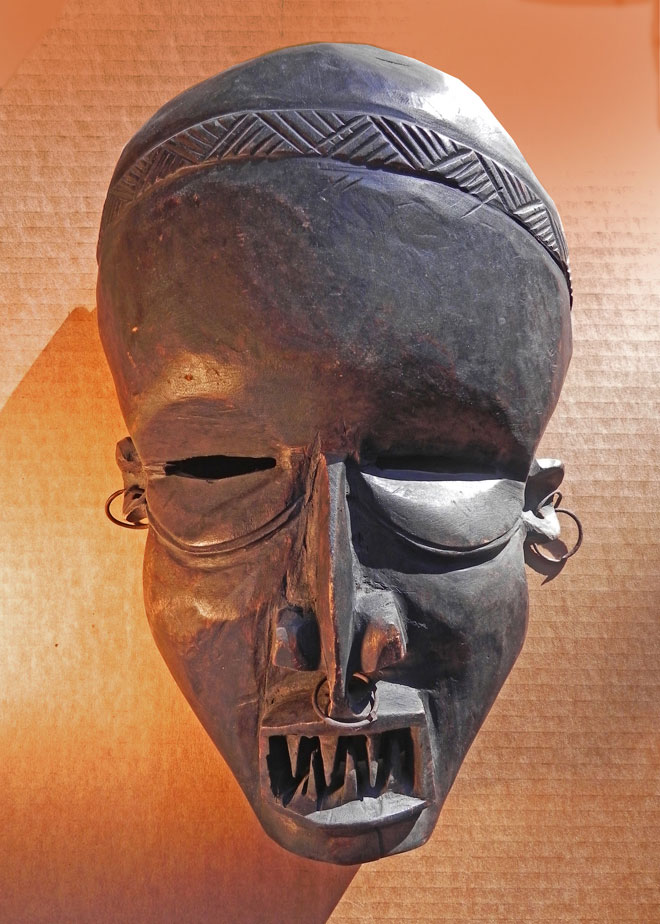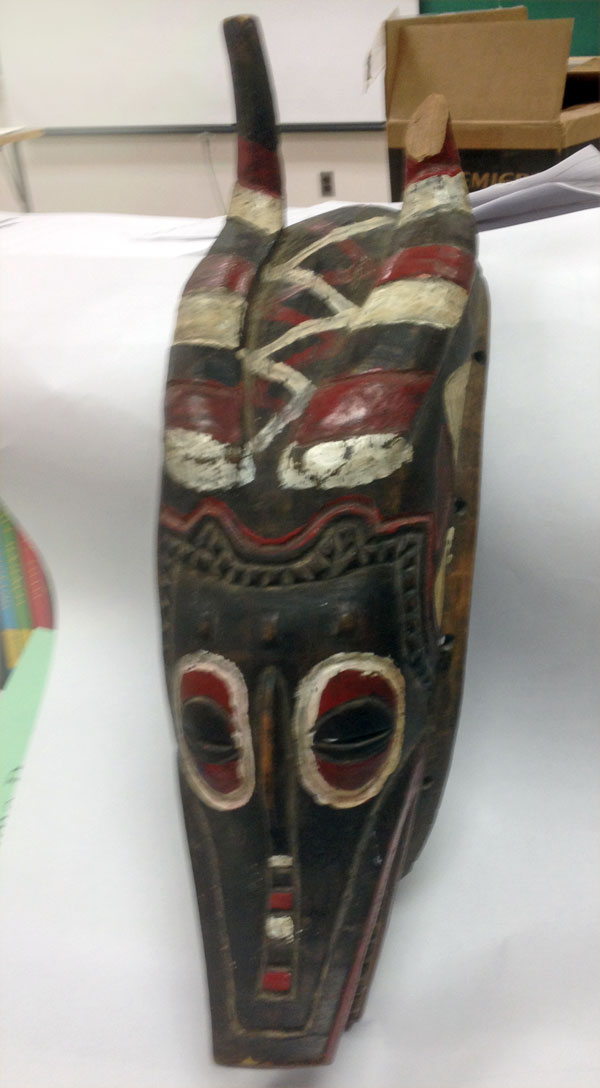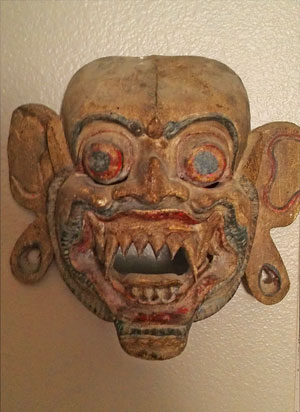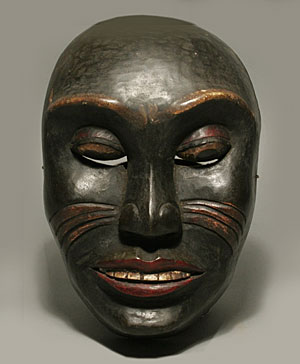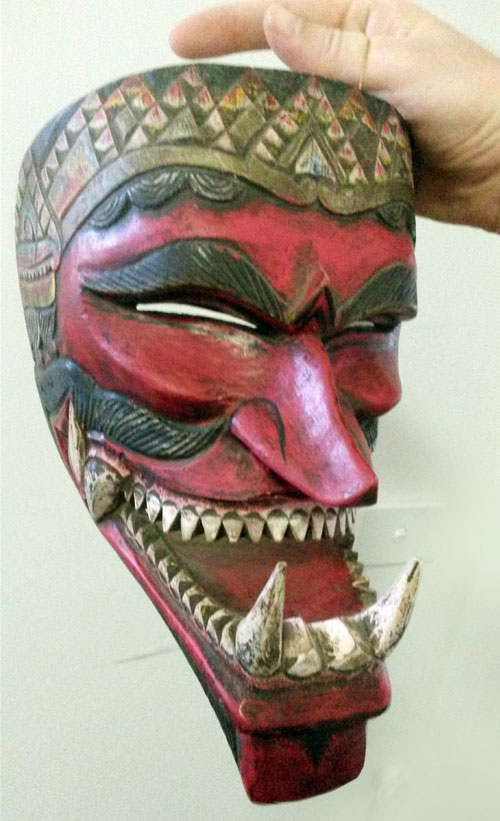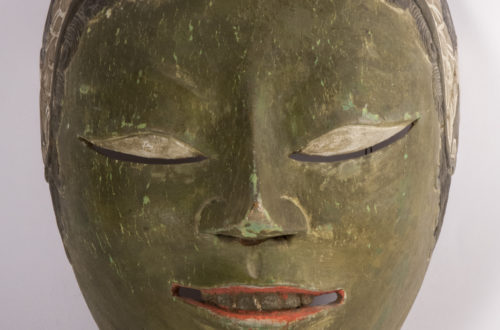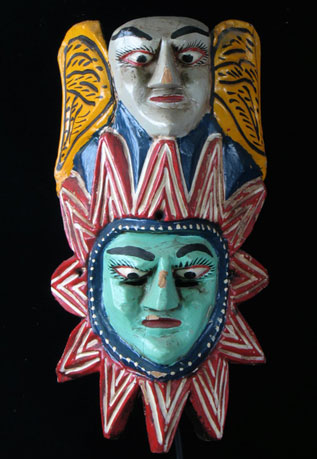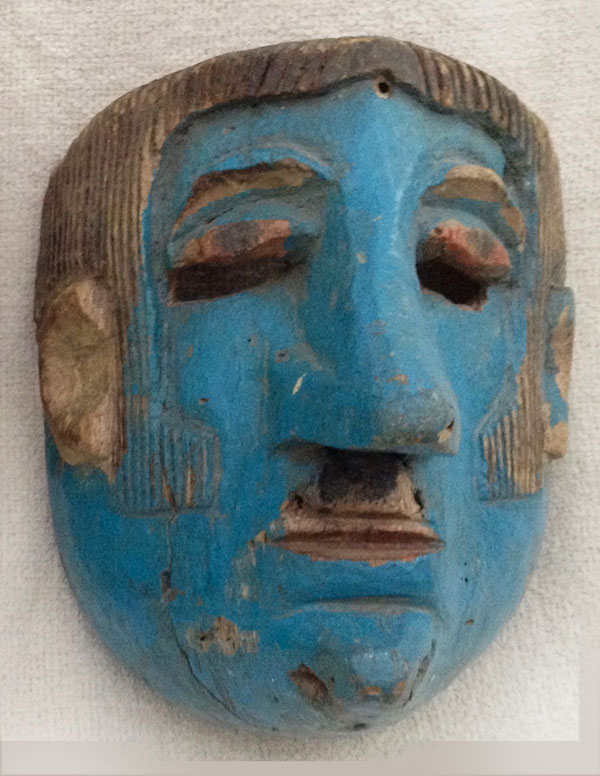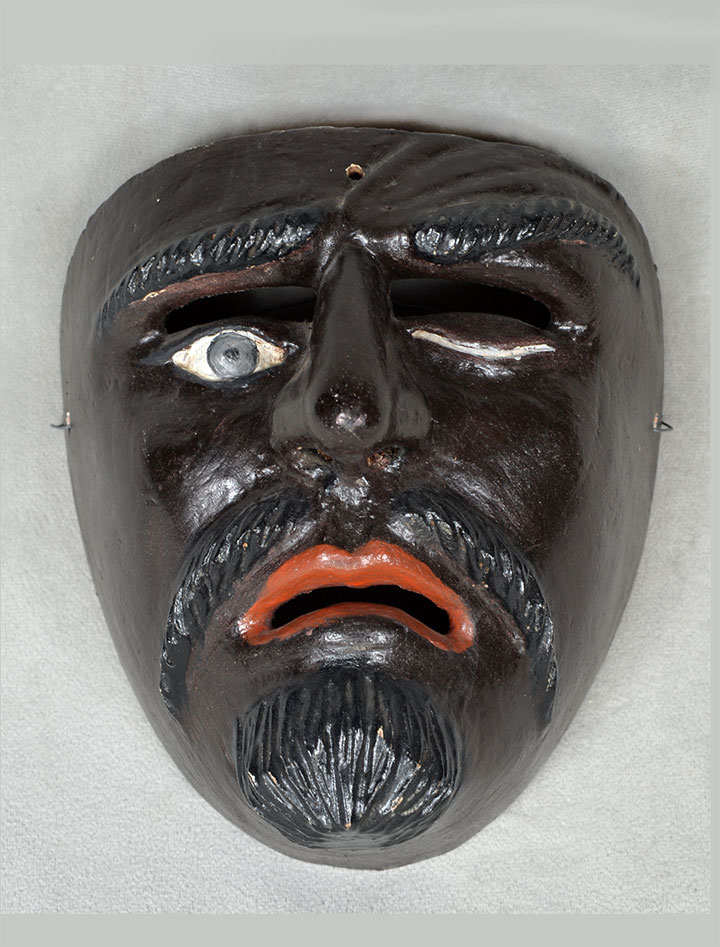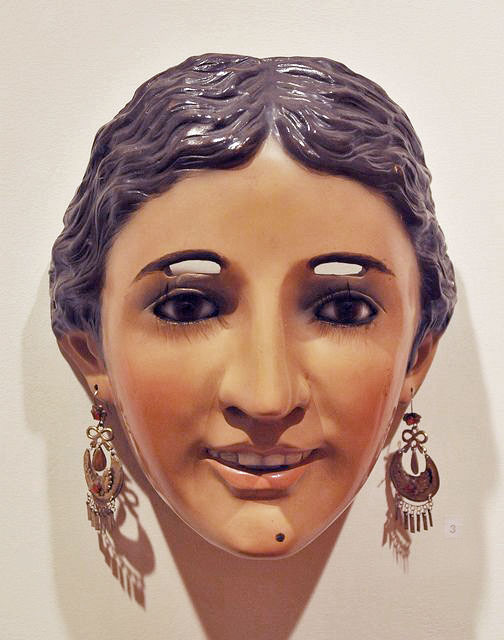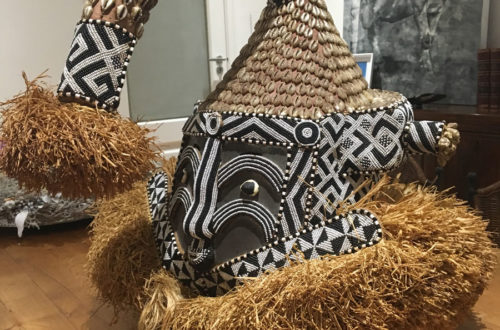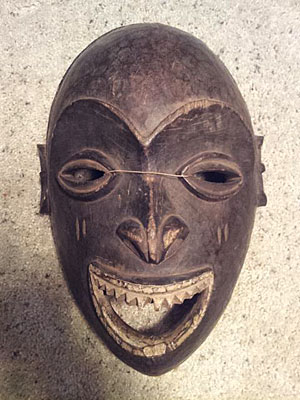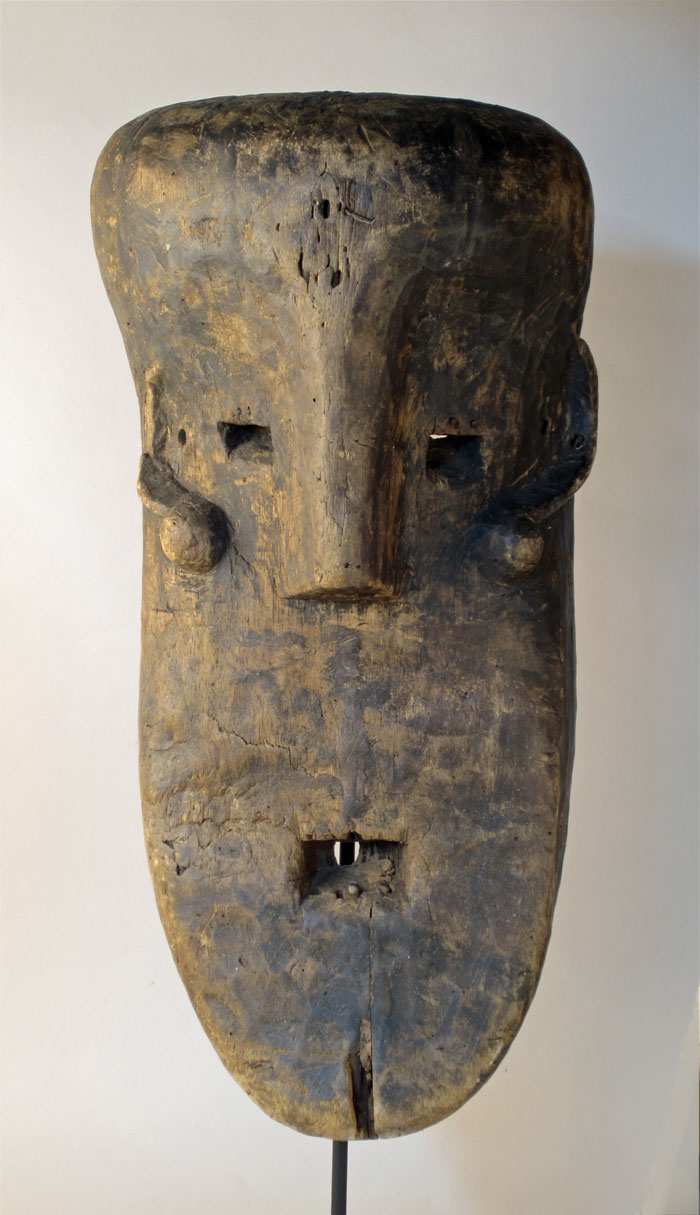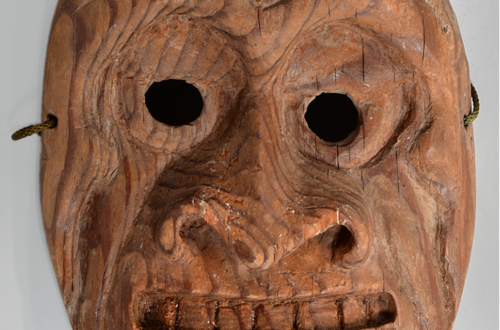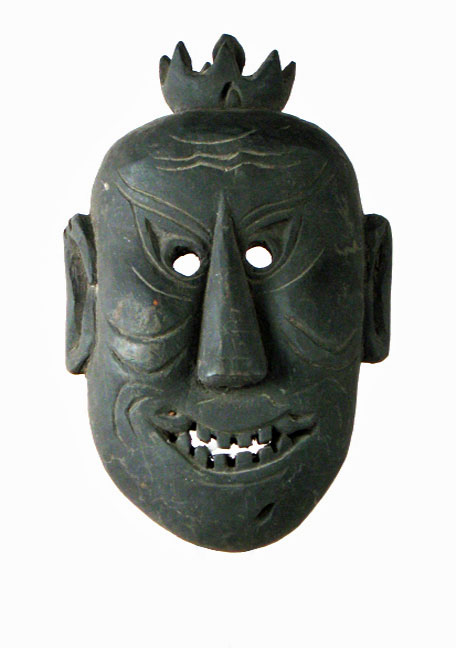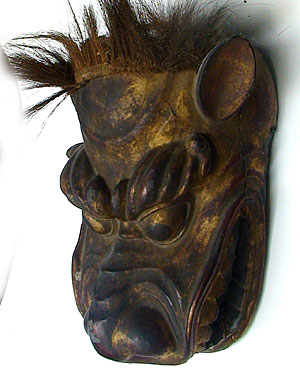Q: Just got this mask and have searched 1000’s of pages on the net and cant even find where it may be from please help! Anne, 689 A: Tourist masks (also called decoratives) have been made in Guerrero, Mexico, for more than a 100 years. They’re always antiqued to look old and used. By the 1960’s their designs were getting more elaborate and experimental. I have never seen one like yours and may not ever again. They still appeal to certain types of art collectors. Perhaps you would like to go this route, but be careful not to pay too much money for them. They don’t hold their value well.
-
-
I call this Caribbean
Q: 33 inches, painted paper mache believe to be from South America. Got it from a friend as a gift. Had a horn off the top of the head but is missing. The outer horn looks like it was to fit inside another horn that is still inside the mask. Mask is large enough to fit over your head. Can you give approx. value and let us know if this is something we should hold onto? George, 688 A: From Panama, the people who make these big papier mache Diablico Sucio masks are obviously influenced by the Caribbean, and this is true of other parts of Central America as well
-
High-end Mexican mask
Q: I have a lot of very good Mexican Dance masks that I bought from a collector in Mexico City when I lived there a few years ago but I don’t have one of these http://cgi.ebay.com/ws/eBayISAPI.dll?ViewItem&item=301332462024. Could it possibly be worth this kind of money? Christophe, 687 A: This is indeed a very desirable mask. It is called a Parachico and is made in Chiapa de Corzo, Chiapas, Mexico.
-
A different kind of devil
Q: Nathan D. suggested that I contact you regarding the pair of masks that I bought from a well known financier’s estate. He purchased them from a gallery in NYC in the late 70’s. I was told by his son that they are “Mexican Death Masks”, but everyone that I have shown them to, has no idea what they are and has never seen anything like them. I am an African art collector but was so fascinated by them that I had to have them. They are constructed of hand painted thick, leather, genuine goat horns and goat hair, I believe. The insides of the masks are woven. The black…
-
A favorite type of African mask
Q: This mask looks like ebony wood. It is 20″ x 9″ wide. It was a gift from a friend who traveled extensively. I have had it since the 1990’s. Cheryl, 685 A: We see thousands of masks of this basic design and, frankly, in never get tired of looking at them. Here is a little more information.
-
Is it as old as it looks?
Q: Please check out this mask. The seller says it is old (I know they always say this). If you want I can send you few more close-ups. Your opinion is very appreciated. Reminds Luba but these horns.. And also the stitches, were they made on purpose so the mask looks old? Or are they real? The mask has 2 holes at sides and 3 holes for the beard. This is Kigali, Rwanda. Thank you. Sayn, 684 A: It’s a horned Kayamba mask from the Lega people in the Democratic Republic of the Congo.
-
Is this Balinese mask old?
Q: Hi, my mother recently acquired this mask when a relative passed away, and I was really curious as to what the mask was depicting and how it may have been used. She thinks it is from Bali, but I have no idea. Thank you for your time! Zack, 683 A: Your mother is right. It is a beat up Rangda mask that might actually be an antique.
-
Cheap Mexican decorative
Q: Can you tell me something about this triple head (man and some type of animals) mask. Made of wood. I don’t know anything about it but need to sell it and want to say the truth about the mask. Thanks, Tina, 682 A: About 40 years ago I bought my first mask. It was an inexpensive but very colorful piece that was made by the same group of carvers in Guerrero, Mexico, that made yours.
-
Hard to recognize East African
Q: I purchased this mask from an auction or estate sale and was wondering if you could tell me if it’s a tourist mask or actual tribal. Thank you. David, 681 A: I was having trouble identifying this mask and asked my friend Aaron to help. His first choice was the Makonde people who live in both Tanzania and Mozambique.
-
A little about age
Q: This mask was bought on Borneo and is said to be from the Iban on Borneo used for rice-field ceremony. It comes from the Kapit area. I am curious whether it is authentic (indication is that it comes from the 1920’s). Adam, 680 A: Simple, primitive masks that look like this can be found in many cultures throughout the world including African, Himalayan, Timorese, Mexican, etc. Fortunately, you know exactly where yours was made.
